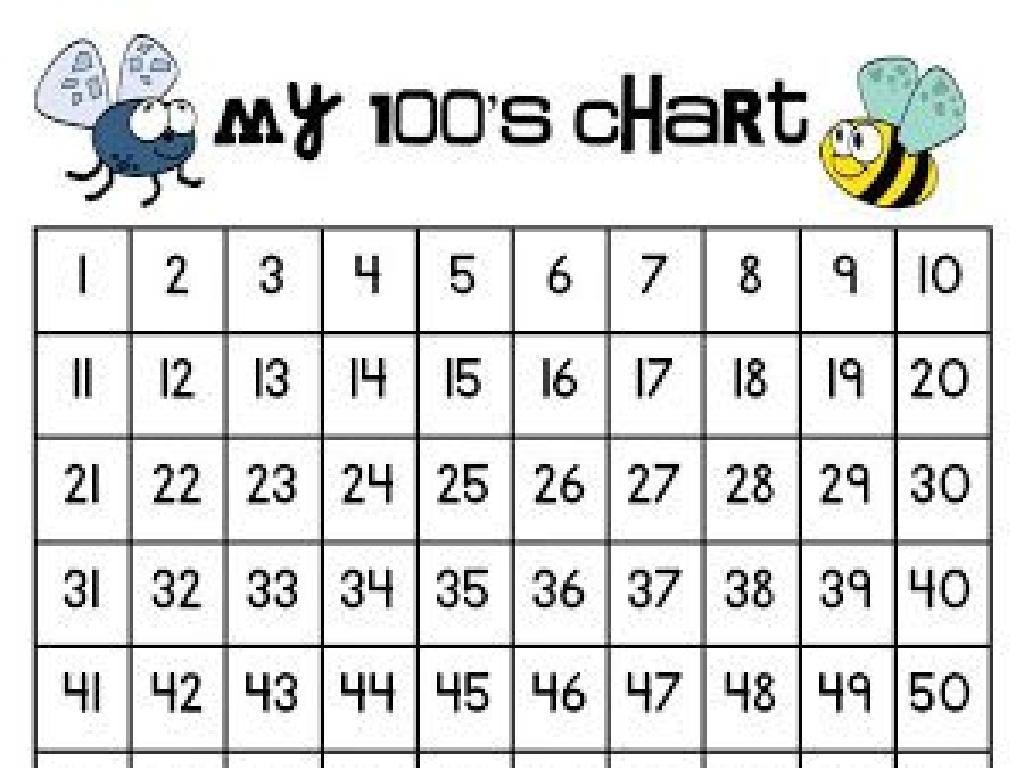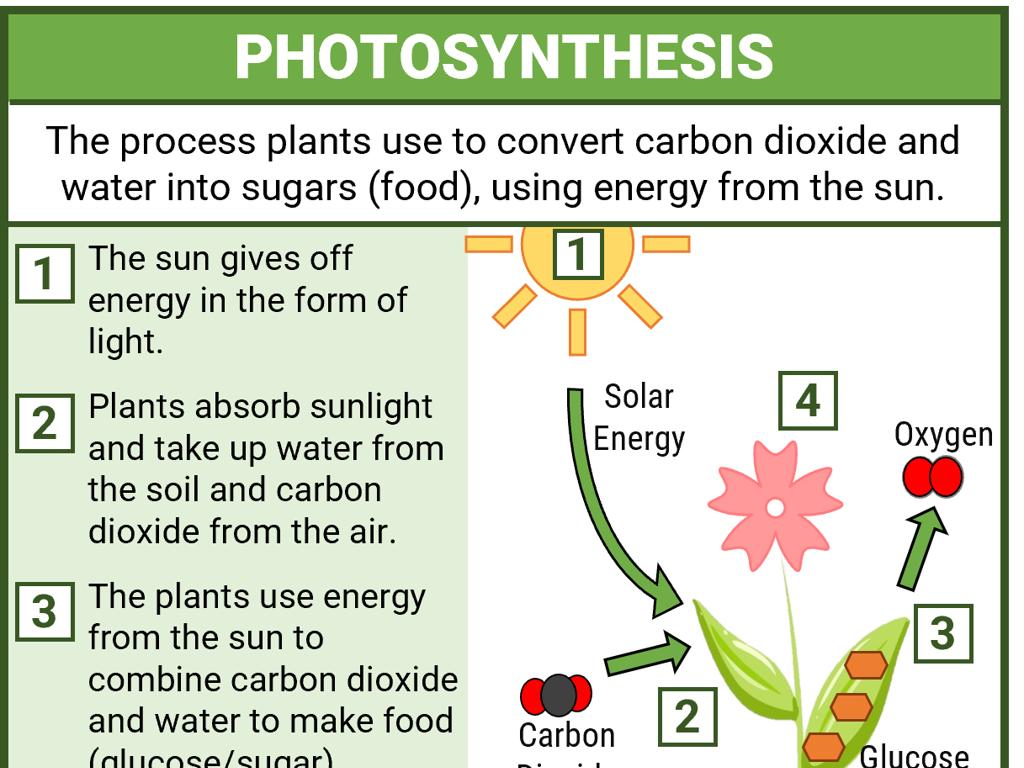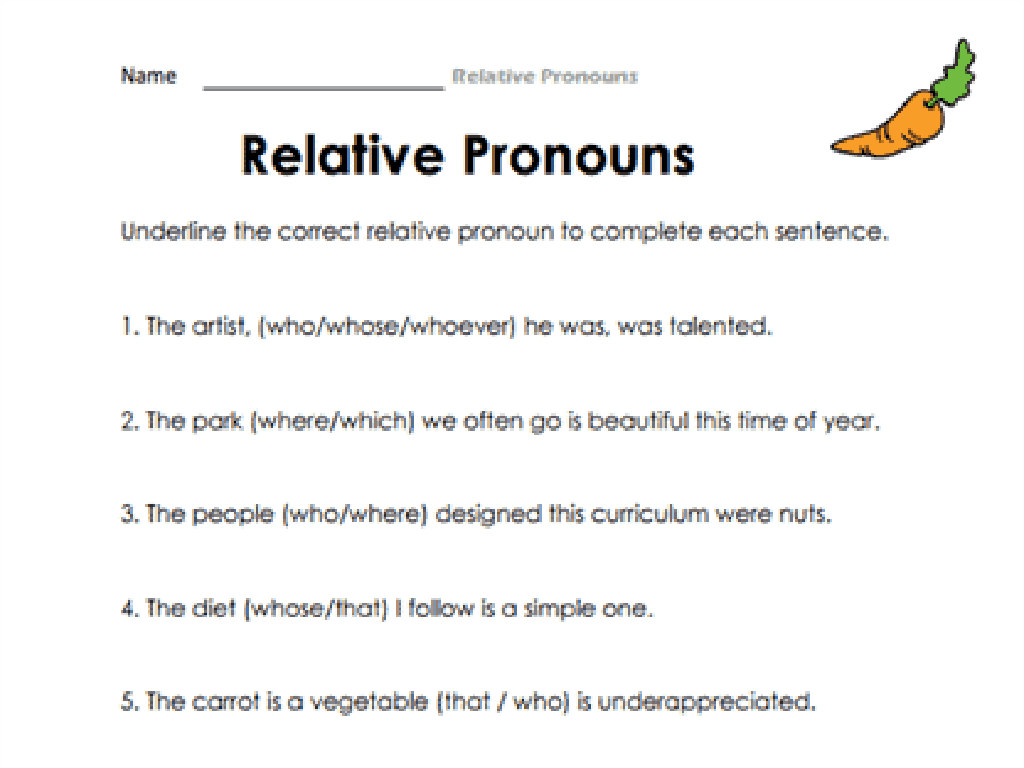Compare Cells And Cell Parts
Subject: Science
Grade: Fifth grade
Topic: Cells
Please LOG IN to download the presentation. Access is available to registered users only.
View More Content
Welcome to the World of Cells!
– Cells: Life’s Building Blocks
– All living things are made of cells, tiny but mighty!
– Why cells are important
– Cells make up our body and keep us alive.
– Comparing cell parts
– Just like legos have different shapes, cells have different parts with special jobs.
– Today’s lesson preview
|
This slide introduces the concept of cells as the fundamental units of life, emphasizing their importance in all living organisms. Explain that cells are like building blocks that make up everything living, from the smallest bacteria to the largest whales. Highlight that understanding cells is crucial because they are the basis of how our bodies function. Today’s lesson will focus on comparing different parts of the cell, such as the nucleus, mitochondria, and cell membrane, and understanding the unique role each part plays. Encourage students to think of cells as a miniature city, with each part performing a specific function to keep the city (or cell) alive and well.
Exploring the Building Blocks of Life: Cells
– What is a cell?
– The basic unit of life, found in all living things.
– Cells’ role in organisms
– Cells work together to keep organisms alive.
– Comparing cell types
– There are many cell types, each with a special job.
– Animal vs. Plant cells
– Animal cells differ from plant cells in several ways.
|
This slide introduces the concept of cells as the fundamental unit of life, which make up all living organisms. Emphasize that cells are not just tiny dots under a microscope, but the essential building blocks that perform all the functions necessary for life. Discuss the various roles cells play, from providing structure to facilitating growth and repair. Highlight the differences between animal and plant cells, such as the presence of a cell wall and chloroplasts in plant cells, which are absent in animal cells. Use diagrams to illustrate the differences. Encourage students to think about the diversity of cell types and their specialized functions in different organisms.
Exploring Cell Parts and Functions
– Common parts of a cell
– Cells have shared parts like the nucleus, which is the control center.
– Functions: nucleus, cytoplasm, membrane
– The nucleus stores DNA, cytoplasm holds components, and the membrane protects the cell.
– Unique plant cell parts
– Plant cells have a cell wall for structure and chloroplasts for photosynthesis.
– Understanding cell diversity
|
This slide introduces students to the basic and unique parts of cells. Start by discussing the common parts found in all cells, emphasizing the nucleus, cytoplasm, and cell membrane. Explain the nucleus as the ‘brain’ of the cell, the cytoplasm as the ‘factory floor,’ and the cell membrane as the ‘security gate.’ Then, highlight the unique aspects of plant cells, such as the cell wall and chloroplasts, explaining how the cell wall provides rigidity and support, while chloroplasts are essential for converting sunlight into energy through photosynthesis. Encourage students to think about the differences and similarities between plant and animal cells and how these structures relate to their functions.
Animal Cells vs. Plant Cells
– Similarities in cells
– Both have a nucleus, cytoplasm, and cell membrane
– Key differences in cells
– Plant cells have a cell wall and chloroplasts, unlike animal cells
– Examples of cell types
– Animal cell: muscle cell; Plant cell: leaf cell
– Roles in nature
– Animal cells help in movement, plant cells aid in photosynthesis
|
This slide aims to compare and contrast animal and plant cells, highlighting their similarities and differences. Both cell types share several structures, such as the nucleus, which houses DNA, and the cytoplasm, where cellular processes occur. However, plant cells have unique features like a rigid cell wall that supports the plant’s structure and chloroplasts for photosynthesis, which are absent in animal cells. By examining specific examples like muscle cells in animals and leaf cells in plants, students can understand the specialized roles these cells play in their respective organisms. Discuss how these differences are crucial for the survival and function of each organism in nature.
Microscopic Exploration of Cells
– Scientists and microscopes
– Microscopes magnify cells so we can study them
– Virtual microscope activity
– Use online tools to explore cells virtually
– Observing cells up close
– Look at slides of real cells under a microscope
– Understanding cell parts
|
This slide introduces students to the use of microscopes in the study of cells, a fundamental tool for scientists. The virtual microscope activity is an interactive way for students to engage with the material and gain practical experience without the need for physical equipment. They will observe real cell examples, which helps them to identify different cell parts and understand their functions. Encourage students to take notes on their observations and to discuss the differences and similarities between the cells they see. This activity will help solidify their understanding of cell structure and the importance of microscopes in biology.
Cell Parts and Their Functions
– Explore cell organelles
– Organelles are specialized structures in cells, like mitochondria and chloroplasts.
– Functions of each organelle
– Each organelle has a unique role, e.g., mitochondria produce energy.
– Organelles cooperation
– Organelles interact for cell health, like how ribosomes make proteins that the Golgi apparatus sorts.
– Impact on cell’s life
|
This slide aims to give students a closer look at the various organelles within a cell and their specific functions. It’s crucial to explain that just like organs in our body have different roles, organelles are like tiny organs inside the cell with specialized functions. For example, mitochondria are the powerhouse of the cell, chloroplasts help in photosynthesis in plant cells, and the nucleus contains genetic material. Emphasize how these organelles must work in harmony for the cell to function properly. Activities can include creating a cell model, identifying organelles under a microscope, or drawing diagrams to illustrate their functions.
Class Activity: Build a Cell Model
– Create a 3D cell model
– Gather materials for the model
– Use clay, beads, and pipe cleaners
– Collaborate in groups
– Work together, assign roles
– Choose animal or plant cell
– Decide as a group which type to model
|
This hands-on activity is designed to help students understand the structure of cells by building a 3D model. Provide a variety of materials such as clay for the cell body, beads for organelles, and pipe cleaners for the cytoskeleton. Organize the class into small groups and let each group decide whether they want to build an animal or plant cell. Encourage them to discuss the differences between the two types of cells as they work. Each group member should have a specific role, such as gathering materials, assembling parts, or labeling the organelles. This activity will foster teamwork and deepen their understanding of cell structure. Prepare to assist groups as needed and ensure that each student is engaged in the process.
Review and Reflection: Cells and Their Parts
– Recap today’s key points
– Discuss cell structure learning
– Cells are building blocks of life, with parts like the nucleus and mitochondria
– Reflect on our class activity
– How did the activity help us understand cell functions?
– Share what we’ve understood
|
This slide aims to consolidate the students’ understanding of the cell structure and function. Begin with a brief recap of the main points covered in the lesson, such as the definition of a cell, the importance of various cell parts, and their roles. Engage the students in a discussion about what they have learned, encouraging them to articulate their understanding of cell parts like the nucleus, mitochondria, and cell membrane. Reflect on the class activity, asking students to share how the activity helped them visualize or comprehend how cells work. This reflection will help reinforce their learning and provide valuable feedback on the effectiveness of the activity. Encourage students to share their insights and any newfound appreciation for the complexity of cells.
Homework: Cell Model Presentation
– Create your cell model
– List cell parts and functions
– Nucleus controls the cell, mitochondria provide energy
– Compare animal and plant cells
– Plant cells have a cell wall and chloroplasts, animal cells do not
– Present your model next class
|
Students are tasked with creating a cell model as a homework assignment. They should include all the major parts of a cell, such as the nucleus, mitochondria, and cytoplasm, and explain the function of each. Additionally, they must highlight the differences between animal and plant cells, such as the presence of a cell wall and chloroplasts in plant cells. This assignment will help students understand the structure and function of cells, as well as the key differences between the two main types of cells. For the next class, students should be prepared to present their model and explain the parts and differences they have included. This will reinforce their understanding and allow for peer learning.






